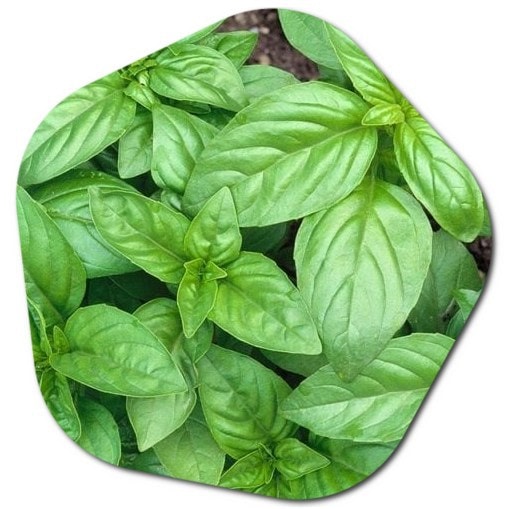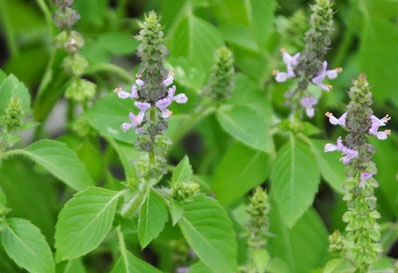What is Basil? Basil, which usually grows in temperate regions, is found in the group of annual plants. Basil, whose cultivation is usually done for use in meals, is among the plants that grow at home with its scent. In adulthood, their height varies between 20 and 60 centimeters. The structure of the leaves is oval with toothed edges. It is seen that the basil, which is dark green in color, turns red as it descends from the stem part. The flowers open in late summer. Their colors are pink or white. Basil, whose seeds are in the form of tears, can be used raw or cooked in meals.
Basil (Ocimum basilicum) can be grown in America. Basil is a popular herb used in many cuisines around the world, and it is well-suited for cultivation in a variety of climates, including those found in North and South America. Basil is commonly grown as an annual herb, and it thrives in warm temperatures with well-drained soil and plenty of sunlight.

In the United States, for example, basil can be grown in gardens, pots, or containers, both outdoors and indoors. It is often cultivated during the warm spring and summer months. Different varieties of basil are available, each with its unique flavor profile, such as sweet basil, Thai basil, and lemon basil. Gardeners and home cooks alike often enjoy growing and using basil for culinary purposes.
How to Grow Basil in the United States?
If basil is to be grown in pots, the seeds should be sown in March. If you want to grow it from the garden, it is better to sow the seeds in May. When you grow it in the garden, keep it away from cucumbers and peas if possible. If you have planted tomatoes, take the basil seeds immediately to the side. Its fragrance will also keep away pests that will harm the tomatoes.
If you planted basil in a pot, make sure it gets sunlight. Because it is daylight that basil needs the most to grow. It will start to take root and root in about 7 days. It is not necessary to water frequently. Watering a maximum of 1-2 times a week will be enough. But be careful to water deeply. If the basil leaves are yellowed, it means that it has received too much water, and if they have dried up, it means that you have given too little water.
Is basil native to the Americas?
No, basil is not native to the Americas. Basil (Ocimum basilicum) is believed to have originated in tropical regions of Asia, specifically in India. It has a long history of cultivation in various parts of the world and has become a staple herb in many cuisines.

Basil was introduced to Europe through trade routes and gradually spread to other parts of the world. While it is not native to the Americas, it is widely cultivated and used in North and South America today. The herb’s adaptability to different climates and its popularity in cooking have led to its cultivation in various regions across the globe.
Where Does Basil Grow in the United States?
Basil can be successfully grown in various regions of the United States, as long as the conditions are suitable for its growth. Basil is typically cultivated as an annual herb, and it thrives in warm temperatures, well-drained soil, and plenty of sunlight. Here are some general guidelines for growing basil in different regions of the United States:
- Northern States:
- In northern states with cooler climates, basil is often grown during the warm spring and summer months. It’s best to wait until the threat of frost has passed before planting basil outdoors.
- Alternatively, basil can be grown indoors or in containers during colder seasons and moved outside when the weather is warmer.
- Southern States:
- In the southern states with warmer climates, basil can be grown almost year-round. However, extreme heat can sometimes stress the plants, so providing some shade during the hottest part of the day may be beneficial.
- Western States:
- Basil can be grown successfully in the western states, taking into consideration the local climate and temperature variations. In areas with arid conditions, proper irrigation is essential.
- Eastern States:
- Basil can thrive in the eastern states, but attention should be given to soil drainage and sunlight exposure. Regular harvesting can also encourage bushier growth.
- Container Gardening:
- Basil is well-suited for container gardening, allowing individuals in various regions to cultivate it on patios, balconies, or windowsills. This is particularly useful in areas with limited space or less favorable outdoor conditions.
Remember that while basil can adapt to different climates, it generally prefers temperatures between 50°F (10°C) and 90°F (32°C) and well-drained soil. If you’re unsure about the specific conditions in your region, local gardening resources or nurseries can provide valuable information and advice tailored to your location. Where can I grow basil in the United States? >>
Basil Care in the United States
Growing basil in the United States involves providing the right conditions for its cultivation. Here are some general guidelines for caring for basil:
- Planting Time:
- In most regions, plant basil after the last frost in the spring. Basil is sensitive to cold temperatures, so it’s best to wait until the soil has warmed up.
- Sunlight:
- Basil thrives in full sunlight. Ensure that your basil plants receive at least 6 to 8 hours of direct sunlight per day.
- Soil:
- Plant basil in well-draining soil with a slightly acidic to neutral pH (around 6 to 7). Good drainage is crucial to prevent root rot.
- Watering:
- Keep the soil consistently moist but not waterlogged. Water when the top inch of soil feels dry. Basil does not like to dry out completely.
- Mulching:
- Applying a layer of mulch around the plants can help retain moisture, regulate soil temperature, and reduce weed competition.
- Pruning and Harvesting:
- Regularly pinch or prune the tops of the basil plants to encourage bushier growth. Harvest leaves regularly, and be sure to remove any flower buds promptly to prevent the plant from going to seed. This process, known as “deadheading,” helps the plant focus on leaf production.
- Fertilizing:
- Basil doesn’t require excessive fertilization. You can apply a balanced, all-purpose fertilizer sparingly during the growing season. Too much fertilizer can lead to excessive leafy growth with diminished flavor.
- Pest Control:
- Keep an eye out for pests like aphids and spider mites. Insecticidal soap or neem oil can be used for organic pest control. Companion planting with other herbs or flowers may also help deter pests.
- Disease Prevention:
- Proper spacing, good air circulation, and avoiding overhead watering can help prevent fungal diseases. If you notice any signs of disease, such as yellowing leaves or spots, treat the plants promptly.
- Overwintering (for perennial varieties):
- In warmer climates, basil can sometimes overwinter. Mulch around the base of the plant to help protect the roots from cold temperatures.
Remember that different varieties of basil may have specific care requirements, so it’s a good idea to check the specific recommendations for the variety you are growing. Additionally, local climate variations may influence the care practices that are most suitable for your specific region within the United States.
